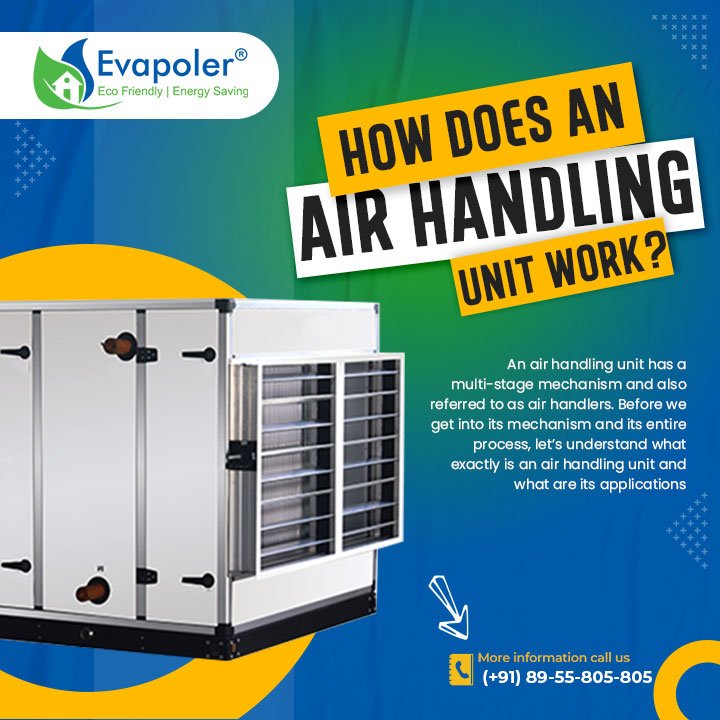
An air handling unit has a multi-stage mechanism and also referred to as air handlers. Before we get into its mechanism and its entire process, let’s understand what exactly is an air handling unit and what are its applications.
What is an Air Handling Unit?
An air handling unit consists of several elements mounted on top of each other, in turn making huge boxes, which are called modules. These modules create necessary ventilation requirements for purifying and cooling the indoor air of a building. These units are generally installed on the roof of the building and the air is circulated through ventilation ducts.
Mechanism of Air Handling Unit
Since air handling units are made up of several elements, let’s acknowledge the application of each of these elements to understand the mechanism of an AHU.
Housing – It is made up of metal but is painted with color to prevent corrosion. It contains all the components of AHU.
Filters – As the name implies, filters are used to extract contaminants from the air. HEPA filters are used when the clients have particular demands. Otherwise, bag filters are used which have very high efficiency in filtering the air. Other types of filters are panel, electrostatic, and carbon filters.
Fan – A fan inside the AHU moves the air to different parts of the building. Since there are various types of fans (backward inclined, backward curved, forward curved, and airfoil), the designer uses special software to check which type of fan is best suitable according to the aesthetics of the building. With the advent of technology, the VAV system has become popular, which can control the volume of the air being discharged. VAV system also follows the greener agenda as it consumes less energy to function smoothly.
Mixing Box – this is a physical location inside the AHU where the air, which returns into the AHU, and the outside air are mixed to create a perfect combination of air that is sent again for air conditioning. Mixing the box aids in recovering heat. Several other elements are also used for recovering heat, such as cross plate heat exchangers and thermal wheel.
Cooling Coil – It is one of the most important parts of the AHU. It is used to dehumidify and cool the air. Depending on which type of AHU system is used, either a chilled liquid cooling coil or a directly expanding cooling coil is used.
Humidifier – During harsh seasons like winters, the air inside the AHU framework and the building as well can become dry, which can be uncomfortable. This is where the humidifier comes into the picture. The mechanism of the humidifier includes the following: steam grid, which is used to heat the water to create steam; steam pan, which is used to heat the water using a heating pan and a spray nozzle that sprays water.
Main functioning – AHU collects air from outside, which is then treated using the filters to remove all the toxic and harmful elements. Then the electromechanical system of fans expels the air into the ducts that distribute the air throughout the building. This air passing inside the duct is cooled using the cooling coil. Silencers are also installed in the AHU to reduce the noise created from the fans and filters.
Types of Air Handling Units
Most commonly, there are 2 types of Air Handling Units – Blow Through and Draw Through. The fan inside a blow-through AHU blows the air using a mixing box, which then passes through the cooling coils and filters before it finally comes out of the ducts into the room. The installation of a draw-through AHU can be either horizontal or vertical. It consists of a fan, which sucks the air inside using the same elements as draw-through AHU before it goes into the ducting network.
AHU is also available in different sizes depending on the requirement of the client. Smaller Air Handling units only contain an air filter , coil and blower .AHUs of larger sizes are also known as Makeup Air Unit (MAU). It is also known as Fresh Air Handling Unit (FAHU) as it does not recirculate the inside air and is 100% dependent on outside air.
Conclusion
The mechanism of an AHU is quiet and its muti-step operations designed as per customer requirement. Different types of AHUs are available in the market that can be classified based on their functioning and size. Depending upon the requirement a proper free consultation with the designengineer can be used to pick the most suitable AHU for the building. Evapoler is the right company you can rely on for your requirements.

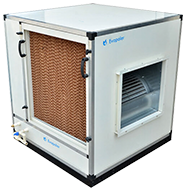

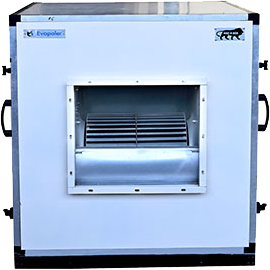
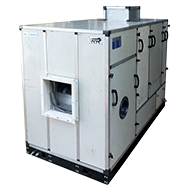
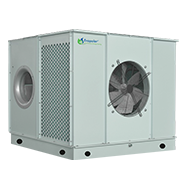
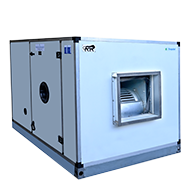
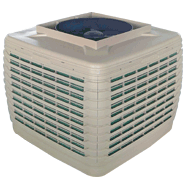


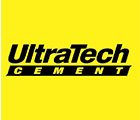






















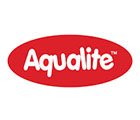





 Download Brochure
Download Brochure  Customer Care
Customer Care